Related Research Articles

Alchemy is an ancient branch of natural philosophy, a philosophical and protoscientific tradition practiced throughout Europe, Africa, China and throughout Asia, observable in Chinese text from around 73–49 BCE and Greco-Roman Egypt in the first few centuries CE.

Jābir ibn Ḥayyān, known by the kunyas Abū Mūsā or Abū ‘Abd Allāh and the nisbas al-Ṣūfī, al-Azdī, al-Kūfī, or al-Ṭūsī, is the supposed author of an enormous number and variety of works in Arabic often called the Jabirian corpus. The scope of the corpus is vast and diverse covering a wide range of topics, including alchemy, cosmology, numerology, astrology, medicine, magic, mysticism, and philosophy.
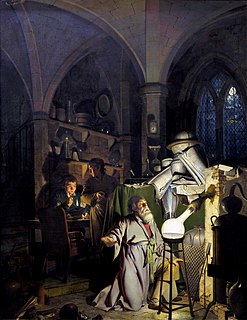
The philosopher's stone, more properly philosophers' stone or stone of the philosophers is a mythical alchemical substance capable of turning base metals such as mercury into gold or silver. It is also called the elixir of life, useful for rejuvenation and for achieving immortality; for many centuries, it was the most sought goal in alchemy. The philosophers' stone was the central symbol of the mystical terminology of alchemy, symbolizing perfection at its finest, enlightenment, and heavenly bliss. Efforts to discover the philosophers' stone were known as the Magnum Opus.
A homunculus is a representation of a small human being. Popularized in sixteenth-century alchemy and nineteenth-century fiction, it has historically referred to the creation of a miniature, fully formed human. The concept has roots in preformationism as well as earlier folklore and alchemic traditions.

Andreas Libavius or Andrew Libavius was born in Halle, Germany c. 1550 and died in July 1616. Libavius was a renaissance man who spent time as a professor at the University of Jena teaching history and poetry. After which he became a physician at the Gymnasium in Rothenburg and later founded the Gymnasium at Coburg. Libavius was most known for practicing alchemy and writing a book called Alchemia, one of the first chemistry textbooks ever written.
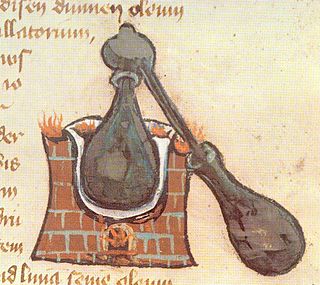
An alembic is an alchemical still consisting of two vessels connected by a tube, used for distilling.
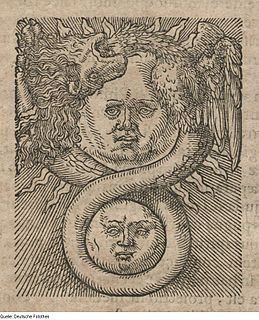
Azoth was considered to be a universal medication or universal solvent, and was sought for in alchemy. Similar to another alchemical idealized substance, alkahest, azoth was the aim, goal and vision of many alchemical works. Its symbol was the Caduceus. The term, while originally a term for an occult formula sought by alchemists much like the philosopher's stone, became a poetic word for the element mercury. The name is Medieval Latin, an alteration of azoc, being originally derived from the Arabic al-zā'būq "the mercury", even if it is a common misconception of the era to link azoth as mercury alone rather than the addition of mercury, salt and sulfur when it comes to the senses and symbols.

Mary or Maria the Jewess, also known as Mary the Prophetess, is an early alchemist who is known from the works of the Gnostic Christian writer Zosimos of Panopolis. On the basis of Zosimos's comments, she lived between the first and third centuries A.D in Alexandria. French, Taylor and Lippmann list her as one of the first alchemical writers, dating her works at no later than the first century.
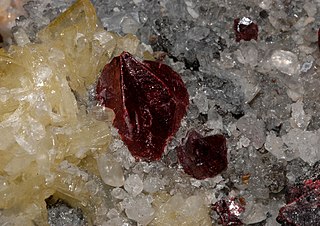
Chinese alchemy is an ancient Chinese scientific and technological approach to alchemy, a part of the larger tradition of Taoist / Daoist body-spirit cultivation developed from the traditional Chinese understanding of medicine and the body. According to original texts such as the Cantong qi, the body is understood as the focus of cosmological processes summarized in the five agents, or Wuxing, the observation and cultivation of which leads the practitioner into alignment and harmony with the Tao. Therefore, the traditional view in China is that alchemy focuses mainly on the purification of one's spirit, mind and body inturn aligning the practitioners with the Source, providing, health, longevity and wisdom, through the practice of Qigong, wuxingheqidao. The consumption and use of various concoctions known as alchemical medicines or elixirs, each of which having different purposes but largely were concerned with immortality.
Mu'ayyad al-Din Abu Isma‘il al-Husayn ibn Ali ibn Muhammad ibn Abd al-Samad al-Du'ali al-Kināni al-Tughra'i was an 11th–12th century Arab poet and alchemist.
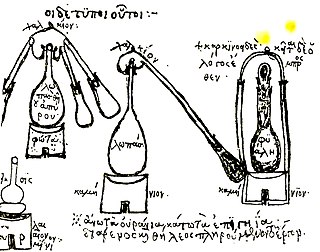
Zosimos of Panopolis was an Egyptian-born Greek alchemist and Gnostic mystic who lived at the end of the 3rd and beginning of the 4th century AD. He was born in Panopolis, and flourished ca. 300. He wrote the oldest known books on alchemy, which he called "Cheirokmeta," using the Greek word for "things made by hand." Pieces of this work survive in the original Greek language and in translations into Syriac or Arabic. He is one of about 40 authors represented in a compendium of alchemical writings that was probably put together in Constantinople in the 7th or 8th century AD, copies of which exist in manuscripts in Venice and Paris. Stephen of Alexandria is another.
Alchemical Studies, volume 13 in The Collected Works of C. G. Jung, consists of five long essays by Carl Jung that trace his developing interest in alchemy from 1929 onward. Serving as an introduction and supplement to his major works on the subject, the book is illustrated with 42 drawings and paintings by Jung's patients.
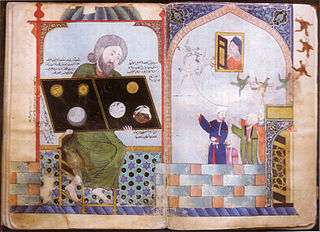
Muḥammad ibn Umayl al-Tamīmī, known in Latin as Senior Zadith, was an Egyptian alchemist who lived from c. 900 to c. 960 AD.
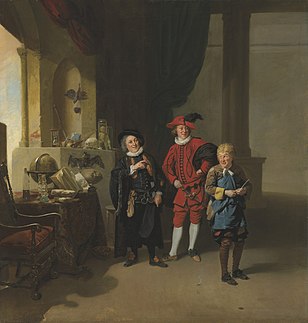
Alchemy has had a long-standing relationship with art, seen both in alchemical texts and in mainstream entertainment. Literary alchemy appears throughout the history of English literature from Shakespeare to modern Fantasy authors. Here, characters or plot structure follow an alchemical magnum opus. In the fourteenth century, Chaucer began a trend of alchemical satire that can still be seen in recent fantasy works like those of Terry Pratchett.
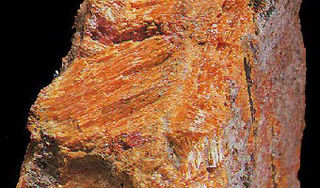
Agathodaemon was an alchemist in late Roman Egypt, known only from fragments quoted in medieval alchemical treatises, chiefly the Anepigraphos, which refer to works of his believed to be from the 3rd century. He is primarily remembered for his various descriptions of elements and minerals, most particularly his descriptions of a method of producing silver, and of a substance he had created, which he called a 'fiery poison', and which, judging by his account, was arsenic trioxide, a highly toxic amphoteric oxide.

Alchemy and chemistry in Islam refers to the study of both traditional alchemy and early practical chemistry by Muslim scholars in the medieval Islamic world. The word alchemy was derived from the Arabic word كيمياء or kīmiyāʾ and may ultimately derive from the ancient Egyptian word kemi, meaning black.
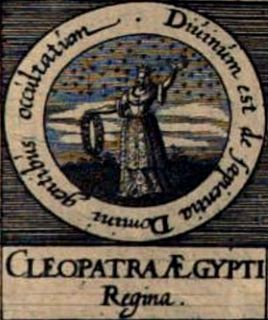
Cleopatra the Alchemist was a Greek alchemist, author, and philosopher. She experimented with practical alchemy but is also credited as one of the four female alchemists that could produce the Philosopher's stone. Some writers consider her to be the inventor of the alembic, a distillation apparatus.
Anna Maria Zieglerin was a sixteenth century alchemist who was found guilty of the murder of a courier, attempted poisoning and intent to burglarize. She was burned alive for her crimes.
Chymes was a Greco Roman alchemist who lived before the third century. He is known only through fragments of text in the works of Zosimos of Panopolis and Olympiodorus of Thebes.
References
- ↑ Rayner-Canham, Marelene (2001). Women in Chemistry: Their Changing Roles from Alchemical Times to the Mid-Twentieth Century. Philadelphia, PA: Chemical Heritage Foundation. pp. 3. ISBN 0941901270.
- ↑ Ogilvie, Marilyn; Harvey, Joy (2014). The Biographical Dictionary of Women in Science . Routledge. p. 978. ISBN 9780415920384.